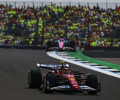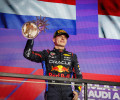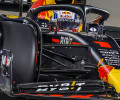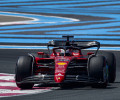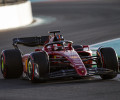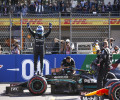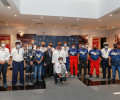F1 – Rocket Man at Silverstone: ESA astronaut Marcus Wandt on taking the FIA flag to space, driving innovation and the parallels between F1 and space flight
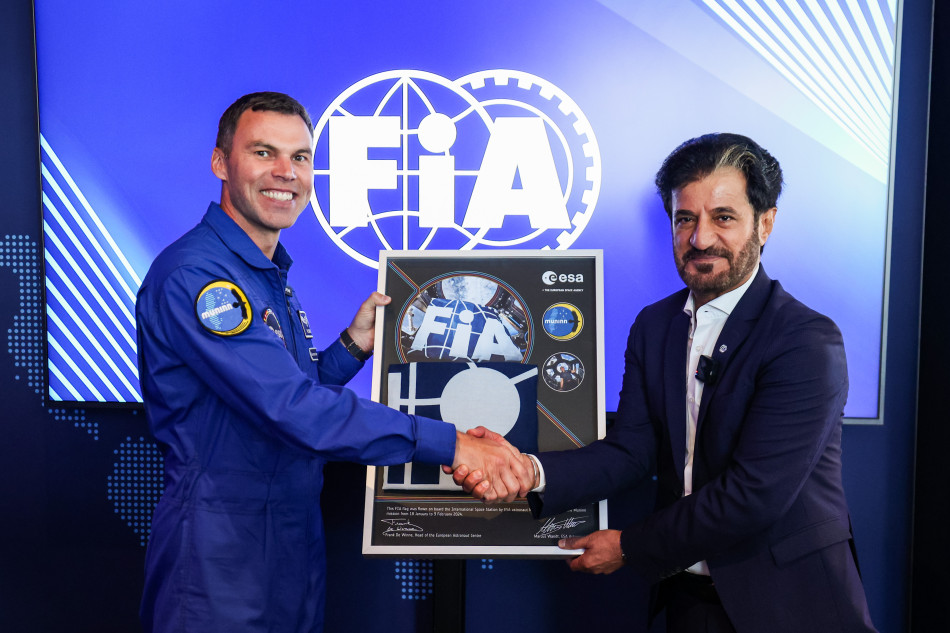
On Saturday at the British Grand Prix, the FIA welcomed the race weekend’s undoubted fastest man to Silverstone when European Space Agency astronaut Marcus Wandt visited the paddock to present FIA President Mohammed Ben Sulayem with an FIA flag he carried to the International Space Station earlier this year to mark the Federation’s 120th anniversary.
On 18 January 2024, top former fighter pilot Marcus blasted into space to take part in the Muninn mission aboard the ISS. Orbiting the Earth at a speed of 17,900mph (20,800 km/h), Marcus’ three-week stint at the research facility saw him support nearly 20 European experiments and spend more than 100 hours conducting science and technology demonstrations. These included the Surface Avatar experiment during which he operated a team of robots on Earth from space to help pave the way for future robotic teleoperations and the Orbital Architecture experiment to investigate how people’s physical and psychological well-being can be affected by living in extreme and confined environments.
After meeting the FIA President and enjoying a thrilling qualifying session, Marcus sat down to talk about speed, innovation, driving positive change and how F1 drivers are not too different for rocket pilots.
Q: Marcus, tell us about the mission you were part of. It’s obviously a long journey to the International Space Station but it’s been a much longer one for you personally. What did it mean to you to make your first space flight?
Marcus Wandt: The mission the way it came about and the outcomes were all very positive. How I got involved was via a little bit of a new path for European astronauts to get into a mission and it happened really fast. After I applied to become an astronaut in April 2021, the selection process took a year and a half. And after that, I very quickly found myself in the astronaut class. Sweden together with ESA, Axiom Space, SpaceX and NASA made the flight happen really fast. I did a high-paced astronaut training programme and all of a sudden I found myself in quarantine to go to space!
A lot of work during those three weeks on the ISS. And it was 100% successful. We got everything done. The mission was fantastic but aside from that there’s the whole experience of going to space.
And what was the experience like for you? Was it the realisation of a dream?
MW: It was. Even just getting into that rocket, into that spaceship, laying or tilting down and watching the countdown, which I'd seen several times in the simulator, was amazing. More than that, it was knowing that when you hit zero, those nine Merlin engines will start up, they’ll generate 7.2 million Newtons of force and you’ll start to accelerate... I've flown a lot of fighters in my career, but the acceleration here… It just starts right away and increases and increases and increases forever. Your brain is just screaming. It's going so fast. It's more than 27,000 kilometres per hour. It’s mind-boggling, but so much fun. I highly recommend the trip!
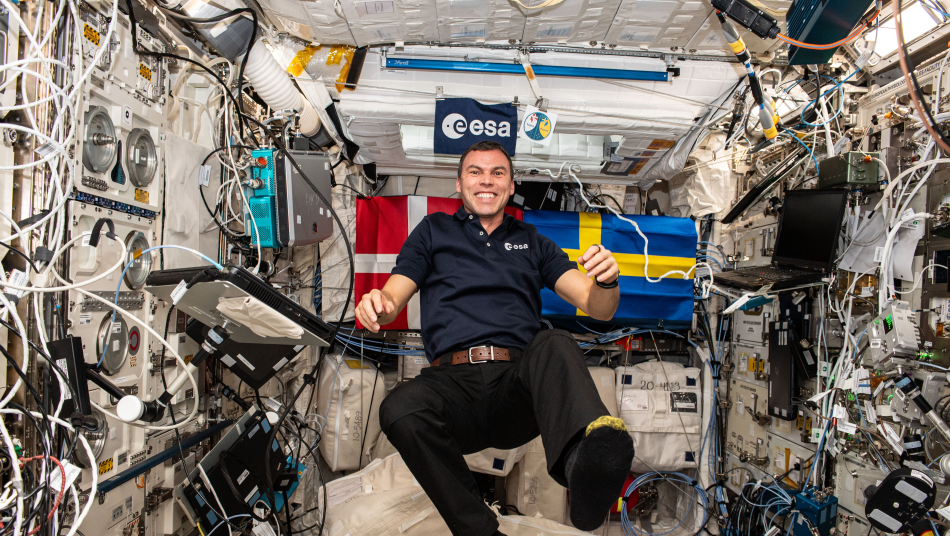
Q: You were aboard the ISS for three weeks and made 288 orbits. How were the living conditions? Did you enjoy your time there?
MW: I definitely did. The living conditions, the volume, when you look at it, seems confined, but I didn’t feel that. For me, the different modules on the ISS are varied enough to make it a small world. So after a week or two, I started to feel very much at home. Also, when you establish routines. when you figure out, ‘okay, this is how long it's going to take for me to grab my shaving gear’ and how long it will take to get that done, I just felt like this could just keep going. There’s also great teamwork on the station and with the people on the ground, because in a mission like this, most of the mission participants are on the ground. The teamwork was really nice and really efficient. Living and working there was very joyful.
Q: You supported almost 20 different experiments while you were up there. What was the one that resonated with you the most?
MW: It's difficult to single one out. I did a lot of physiological or life science experiments where I was the test subject. So blood tests and brain scans and things like that, before, during and after the space flight. A lot of the outcomes from those can be used for medical science on Earth. And that resonates with me a lot, when we can use that environment in space for things that can benefit everyone down here.
And then also tech demonstrations, where I was controlling robots from space that were on ground and sometimes low-level control, really controlling every move they're doing, and sometimes giving high-level commands for collaboration and cooperation between several different avatars on Earth while I was in space. That was pretty fantastic.
Q: You also carried the FIA flag to space to highlight the 120th anniversary of the Federation but also to draw attention to the FIA and ESA's commitment to innovation, science and engineering. What kind of parallels can you draw between motor sport and space exploration?
MV: There are a lot. First of all, the kind of innovation that you have in both is very similar. You have a box to stay within and you have tools and knowledge to build new knowledge. You have to innovate and push the boundaries, while still being very aware of safety and you have to get close to those boundaries without exceeding them. I think that's exactly what we’re doing in space flight as well.
And then there’s the whole teamwork aspect, where you have a driver or an astronaut, but the team is so much bigger than just those. You have a person executing the actions but everyone behind them makes it possible and makes that innovation happen. That’s very important to acknowledge and that's the same in space flight as it is in motorsport.
Finally, there’s the whole human-machine interface and interaction where as an astronaut you go to space within a space vehicle and you're dependent on that system working and you also have to know how it works and where the weaknesses are and where the strengths are and how to utilise that. And that's the same when flying an aircraft or driving a car. Whether you’re driving or piloting a spacecraft you’re constantly evaluating it and getting that information back to the engineering team, saying: ‘hey, this would be better if we did it this way and this is why.’
There are so many things in common that we can learn from and bring that knowledge outside of the community as well, and I like that. When you have a domain or something you are passionate about and there are a lot of other people with the same passion then you start moving towards the same goal and you can reach new innovation, push to new levels of knowledge and create things that wouldn't have been done in other places. That's something that just drives me and that's what I'm seeing here and in the space community as well.

Q: You talk about harnessing a lot of talent to do that. Is it really important to bring that awareness to school children, making them aware of the opportunities that exist in STEM subjects and related careers?
MW: Super important. I go to a lot of universities, but also to high schools and middle schools and most of the kids are very curious. So as long as you just give them a little bit to think about, they just can't stop asking questions, which is so much fun. Just letting them know that there are so many possibilities to create things in engineering, math, science and technology, and that you can also combine that with a passion is something that I love. You can see the fire starting in their eyes and that's very rewarding to me because I think one of the big things with what I'm doing and what's being done here in F1 as well is to inspire our youth. And I think the FIA and also the European Space Agency are utilising sport and space as a tool to get knowledge out into the rest of society and to create interest in engineering.
Q: It’s mission accomplished for you with Axiom Mission 3 and the FIA flag. So what's next for you?
MW: I don't know – hop into one of these F1 cars maybe? No, the plan is to continue working with space development and inspiration, and whether there's going to be another mission or not, I don't know. But I really hope so. Nothing is impossible!

 Facebook
Facebook Twitter
Twitter